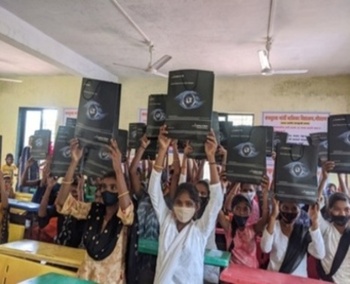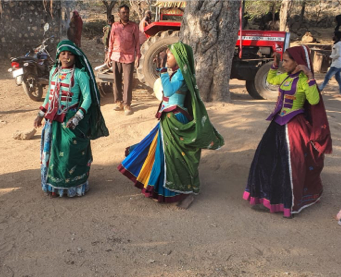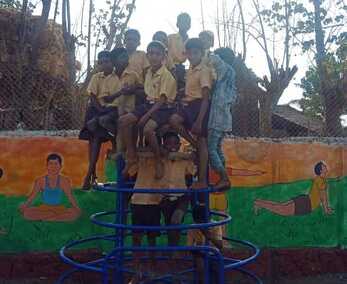From Chalkboards to Smartboards: What Digital Classrooms Mean in Remote Villages

That sound of children’s laughter? It’s pure joy. It’s the sound of learning, of curiosity, of life. For too long in our country’s remote villages, that beautiful sound has been contained within four walls that couldn’t offer much more than shelter. A single, tattered textbook passed between eager hands. A dedicated teacher with nothing but a piece of chalk and a big heart.
Bringing digital classrooms to remote villages can feel like an impossible dream. But at Project Chirag, we’ve learned a secret. The real change doesn’t start with a fancy computer or complicated software. It starts with something much, much simpler: the flick of a switch. It begins with a steady, reliable source of light.
The Real Spark: Improving Rural Education With Technology
Let’s be honest: a smart TV is just a black box on a wall if there’s no power. A tablet is useless once its battery dies. For digital learning in rural India to be anything more than a talking point, you need electricity. Consistent, reliable electricity. It’s that simple.
This is where our work truly begins. When we bring solar power to a village, we’re not just providing bulbs and fans. We’re laying the groundwork for a revolution in education.
What happens when that light comes on? A quiet, dusty room can turn into a place of wonder. Suddenly, students aren’t just listening to a lesson; they’re seeing it. They can take a virtual trip to the bottom of the ocean or watch a historical event unfold right before their eyes. The four walls of their classroom dissolve, opening up to a world of endless knowledge. This is how we begin building modern classrooms in remote areas, from the ground up, with a foundation of light.



A Story from Karjat: The True Impact of Digital Education in Villages
Let me tell you a story about a place called Karjat. Here, 20 Anganwadi centers were struggling. These centers are vital; they are the first step in a child’s education and a lifeline for new mothers and girls. But the buildings had crumbling walls and leaky roofs, no steady power, and very few tools to make learning fun. They were centers of hope, running on fumes.
So, with the incredible support of our friends at Alleima, we got to work. We didn’t just want to patch things up; we wanted to bring real, lasting change. The first thing we did was install 10KW of solar power. No more canceled lessons due to power cuts. From there, everything else could follow. We fixed the buildings, put in water filters for clean drinking water, and brought in the tools for magical learning: smart TVs, audio-visual lessons, and toys.
You can see the difference on the children’s faces. But you can also hear it in the voice of Kalpana Ware, an Anganwadi Sevika who is there every day. She tells it best:
“Our children are incredibly active, enthusiastic, and keen to learn new things. Digital education has revolutionized the teaching and learning process… children actively engaging and eagerly coming to the Anganwadi Center to learn in a fun and stimulating environment. This has not only enhanced their intelligence but has also bolstered parents’ confidence in regularly sending their children to the Anganwadi center… They are now confident, which is very helpful for their future. As a result, the number of children in Anganwadi Centers has also increased.”
Kalpana’s words say it all. The smart TV isn’t just a screen; it’s a magnet for learning and joy. The toys aren’t just for play; they’re building confidence. This is how a smart classroom benefits rural India, not as a gadget, but as a tool that gets kids excited to learn and gives parents faith in their children’s first school.
More Than a Classroom: A Ripple of Change
The change in Karjat doesn’t stop when the school bell rings. It ripples out into the entire community. Think about what this project by Karjat NGO has achieved. It’s more than just a number; it’s 1,176 people, children, mothers and teachers, whose daily lives are now brighter.
That 10KW of solar power means the learning hub can stay open in the evenings for adult literacy classes. It means health workers have a well-lit space for community sessions. It means clean water and better nutrition, leading to healthier families.
And because it’s solar, this progress is kind to our planet. This is what we mean by e-learning in remote schools; it’s about nurturing the whole community, not just one part of it. The kids Kalpana speaks of are now walking into primary school, not with hesitation, but with confidence and excitement for the journey ahead.
It all comes back to that simple idea. When you light up a village, you give its people the power to write their own future. You give them the tools to dream bigger and the confidence to chase those dreams.
You can be a part of this story. You can help us flick that switch.
Donate to solar panel project for school and help us power the future of education, one classroom, one village at a time.





